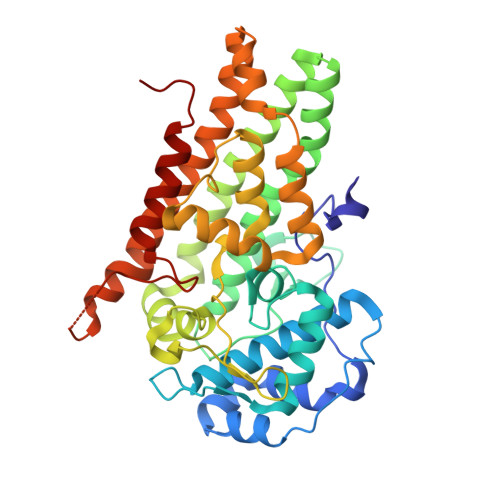New 4-Amino-1,2,3-Triazole Inhibitors of Indoleamine 2,3-Dioxygenase Form a Long-Lived Complex with the Enzyme and Display Exquisite Cellular Potency.
Alexandre, J.A.C., Swan, M.K., Latchem, M.J., Boyall, D., Pollard, J.R., Hughes, S.W., Westcott, J.(2018) Chembiochem 19: 552-561
- PubMed: 29240291
- DOI: https://doi.org/10.1002/cbic.201700560
- Primary Citation of Related Structures:
6F0A - PubMed Abstract:
Indoleamine-2,3 dioxygenase 1 (IDO1) has emerged as a central regulator of immune responses in both normal and disease biology. Due to its established role in promoting tumour immune escape, IDO1 has become an attractive target for cancer treatment. A novel series of highly cell potent IDO1 inhibitors based on a 4-amino-1,2,3-triazole core have been identified. Comprehensive kinetic, biochemical and structural studies demonstrate that compounds from this series have a noncompetitive kinetic mechanism of action with respect to the tryptophan substrate. In co-complex crystal structures, the compounds bind in the tryptophan pocket and make a direct ligand interaction with the haem iron of the porphyrin cofactor. It is proposed that these data can be rationalised by an ordered-binding mechanism, in which the inhibitor binds an apo form of the enzyme that is not competent to bind tryptophan. These inhibitors also form a very tight, long-lived complex with the enzyme, which partially explains their exquisite cellular potency. This novel series represents an attractive starting point for the future development of potent IDO1-targeted drugs.
Organizational Affiliation:
Vertex Pharmaceuticals (Europe) Limited, 86-88 Jubilee Avenue, Abingdon, Oxfordshire, OX14 4RW, UK.

















